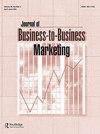探讨B到B和B到C平面广告中的文本模式、意象和主张
IF 2.5
4区 管理学
Q3 BUSINESS
引用次数: 2
摘要
摘要目的本探索性研究考察了企业对企业(B2B)和企业对消费者(B2C)平面广告中的35种文本模式(故事、隐喻、双关语等)、图像和声明。这个广告内容框架可以为今后与其他媒体的合作奠定基础。一项内容分析将B2B广告与B2C广告进行了比较。它还比较了有和没有B2C广告经验的B2B公司。平面广告是一个成熟的背景,因此提供了一个稳定的研究平台,与数字广告共享基本要素。广告行业工作者的定性调查,获奖广告的内容分析,以及创作者对获奖广告的评论分析扩展了研究。对270个平面广告的调查结果显示,广告主普遍未能运用所调查的许多要素。B2B广告在某些元素的运用上也落后于B2C广告。此外,没有B2C经验的B2B广告主也落后于有B2C经验的B2B广告主。这些广告也显得过于公式化,因为它们集中使用了一小部分元素。事实证明,造成这种情况的原因既复杂又模糊。这些见解可以帮助研究人员针对研究项目的重要广告元素。此外,这里使用的框架可以帮助研究人员创建评估其他媒体广告的框架。广告设计师应该能够更好地利用较少使用的说服工具,创造出不那么公式化的广告。广告商可以在这里找到工具来评估为他们制作的广告。独创性/价值/贡献研究结果将为研究人员和从业者提供更清晰的平面广告内容视图。研究结果还可能有助于改进广告创作的管理。为对印刷广告中的文本模式、图像和声明进行分类而开发的框架也可以适用于对数字和其他广告中的内容进行分类,以促进整合营销传播。本文章由计算机程序翻译,如有差异,请以英文原文为准。
Exploring Textual Modes, Imagery and Claims in B to B and B to C Print Advertising
ABSTRACT Purpose This exploratory inquiry examined 35 types of textual modes (stories, metaphors, puns, etc.), imagery, and claims in both business-to-business (B2B) and business-to-consumer (B2C) print advertising. This framework for ad content could form the foundation for further efforts with other media. Methodology/Approach A content analysis compared B2B advertising with that of B2C firms. It also compared B2B firms with and without B2C advertising experience. Print ads are a well-established context and thus provided a stable research platform that shares fundamental elements with digital ads. Qualitative surveys of advertising industry workers, content analysis of award winning ads, and analysis of the creators’ comments on the award winning ads expanded the research. Findings The results from 270 print ads showed that advertisers in general failed to employ many of the elements examined. B2B ads lagged behind B2C ads in employing some elements as well. Further, those B2B advertisers without B2C experience lagged those with B2C experience. The ads also appeared formulaic since they used a small set of elements intensively. The causes for this proved complex and ambiguous. Research Implications These insights can help researchers target important ad elements for research projects. Also, the framework used here may serve to aid researchers in creating frameworks for evaluating ads across other media. Practical Implications Ad designers should be able to take better advantage of less used tools of persuasion and create ads that are less formulaic. Advertisers may find tools here for evaluating the ads created for them. Originality/Value/Contribution The results should provide researchers and practitioners with a clearer view of print ad content. The results may also facilitate improved management of ad creation. The framework developed for classifying textual modes, imagery, and claims in print ads may also be adaptable to classifying content in digital and other advertising to facilitate integrated marketing communications.
求助全文
通过发布文献求助,成功后即可免费获取论文全文。
去求助
来源期刊
CiteScore
2.20
自引率
35.70%
发文量
22
期刊介绍:
The Journal of Business-to-Business Marketing® encourages diversity in approaches to business marketing theory development, research methods, and managerial problem solving. An editorial board comprised of outstanding, internationally recognized scholars and practitioners ensures that the journal maintains impeccable standards of relevance and rigorous scholarship. The Journal of Business-to-Business Marketing features: •basic and applied research that reflects current business marketing theory, methodology, and practice •articles from leading researchers covering topics of mutual interest for the business and academic communities

 求助内容:
求助内容: 应助结果提醒方式:
应助结果提醒方式:


